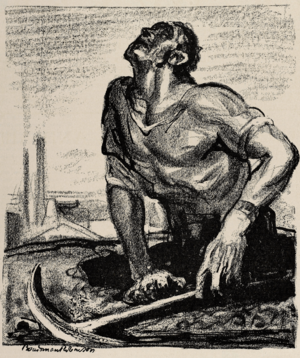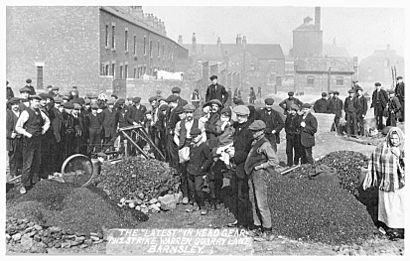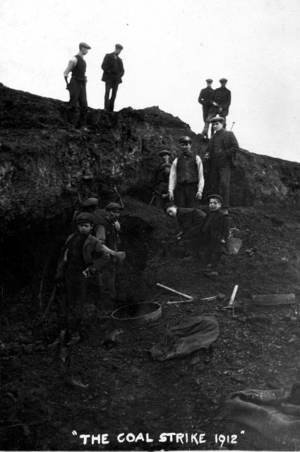UK National coal strike of 1912 facts for kids
The national coal strike of 1912 was a huge event in the United Kingdom. It was the first time coal miners across the entire country went on strike together. Their main goal was to get a minimum wage. This meant they wanted a guaranteed lowest amount of money they could earn for their hard work.
The strike lasted for 37 days. The government stepped in to help end it. They passed a new law called the Coal Mines Act. This law made sure that miners, and workers in some other jobs, would get a minimum wage.
Why Miners Went on Strike
The main reason for the strike was that miners wanted a fair wage. The Miners Federation of Great Britain was the main group that represented the miners. They wanted a clear minimum wage for everyone. Before this, the way miners were paid was very complicated. It often made it hard for them to earn enough money for a day's work.
Similar problems had caused a big fight in South Wales the year before. This showed that the issue of fair pay was important across the country. Miners had tried to get a minimum wage before, in 1894, but that strike was not successful.
What Happened During the Strike
The strike started in late February 1912 in a town called Alfreton in Derbyshire. From there, it quickly spread everywhere in the United Kingdom. Almost one million miners stopped working. This was a huge number of people!
The strike lasted for 37 days, ending on April 6. Because so many miners stopped working, it caused big problems for the country. Trains couldn't run on time, and ships had trouble moving goods. This was because coal was needed to power trains and ships back then.

How the Strike Ended
The strike ended when the government passed the Coal Mines Act. This law was a big win for the miners. It meant that they would now have a minimum wage, which helped make their pay more fair and stable.
See also



